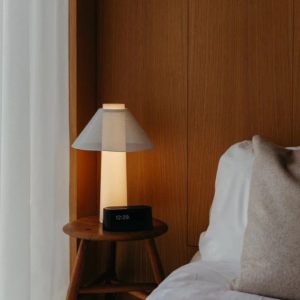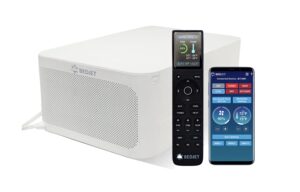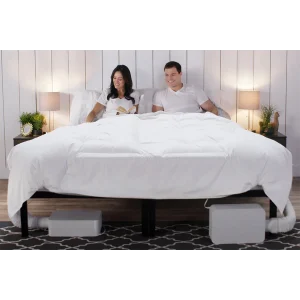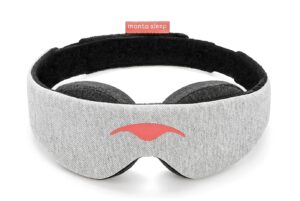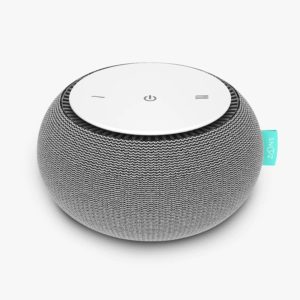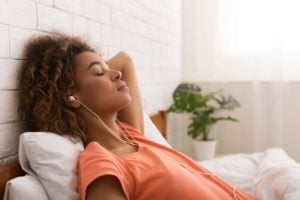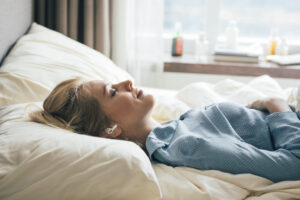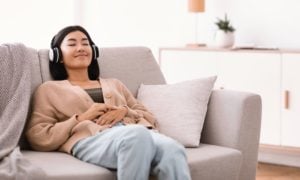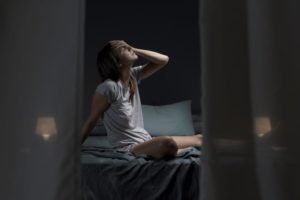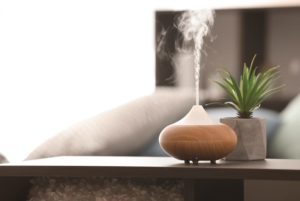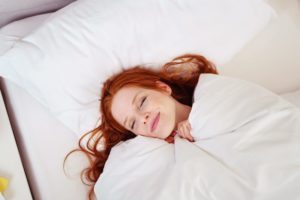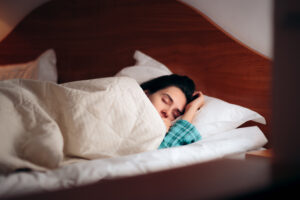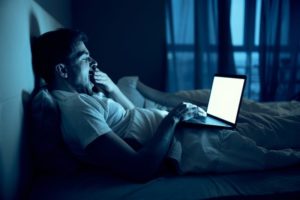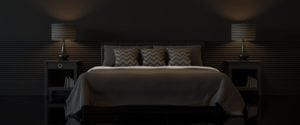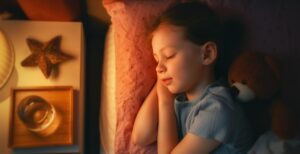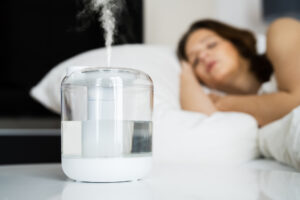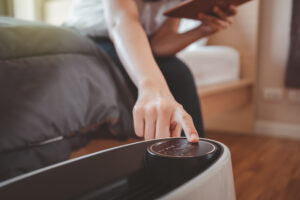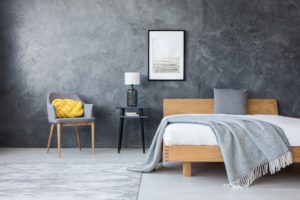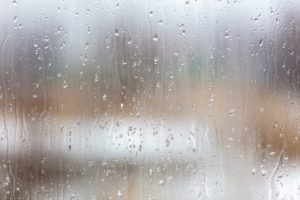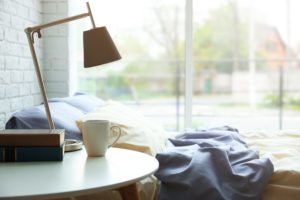When you buy through our links, we may earn a commission. Products or services may be offered by an affiliated entity. Learn more.
What Color Helps You Sleep?
The best bedroom color for sleep is one that calms you down as you prepare for bed. Although color preferences vary from person to person, research reveals that certain colors, such as blue and green, tend to promote more positive emotions and associations. On the other hand, some colors, such as red, may have more of a negative effect.
Does Bedroom Color Affect Sleep?
Although little research directly explores the connection between color and sleep, bedroom color may affect sleep through emotional changes. Psychologists have long been interested in color’s effects on people’s emotional states, and have found that energy and mood are both influenced by color.
Some studies have shown that poor mood can negatively affect sleep quality. Likewise, feeling tense or focused before bed may prevent sleep, which is why sleep experts recommend developing a sleep routine to help you relax before bed. Optimizing your sleep environment by painting your bedroom a relaxing color could be one helpful step in getting a good night’s rest.
Why Does Color Affect Emotion?
Colors can convey important information about our surroundings, as with clean blue water or a red stop sign. Furthermore, our emotional responses to these colors help guide us to an appropriate action or response. Psychologists have proposed different theories explaining the origin of our color associations. There is evidence that psychological responses to colors are both instinctual and learned through cultural norms .
Best Color For Sleep
While the best sleep environment is dark, some colors help promote calmness and positivity, which can help you relax as you prepare for bed.
Although emotional responses to colors tend to be shared across people and cultures, color preferences can also change over time , based on life experiences and learning. The most important consideration is that your bedroom is painted a color that best helps you relax.
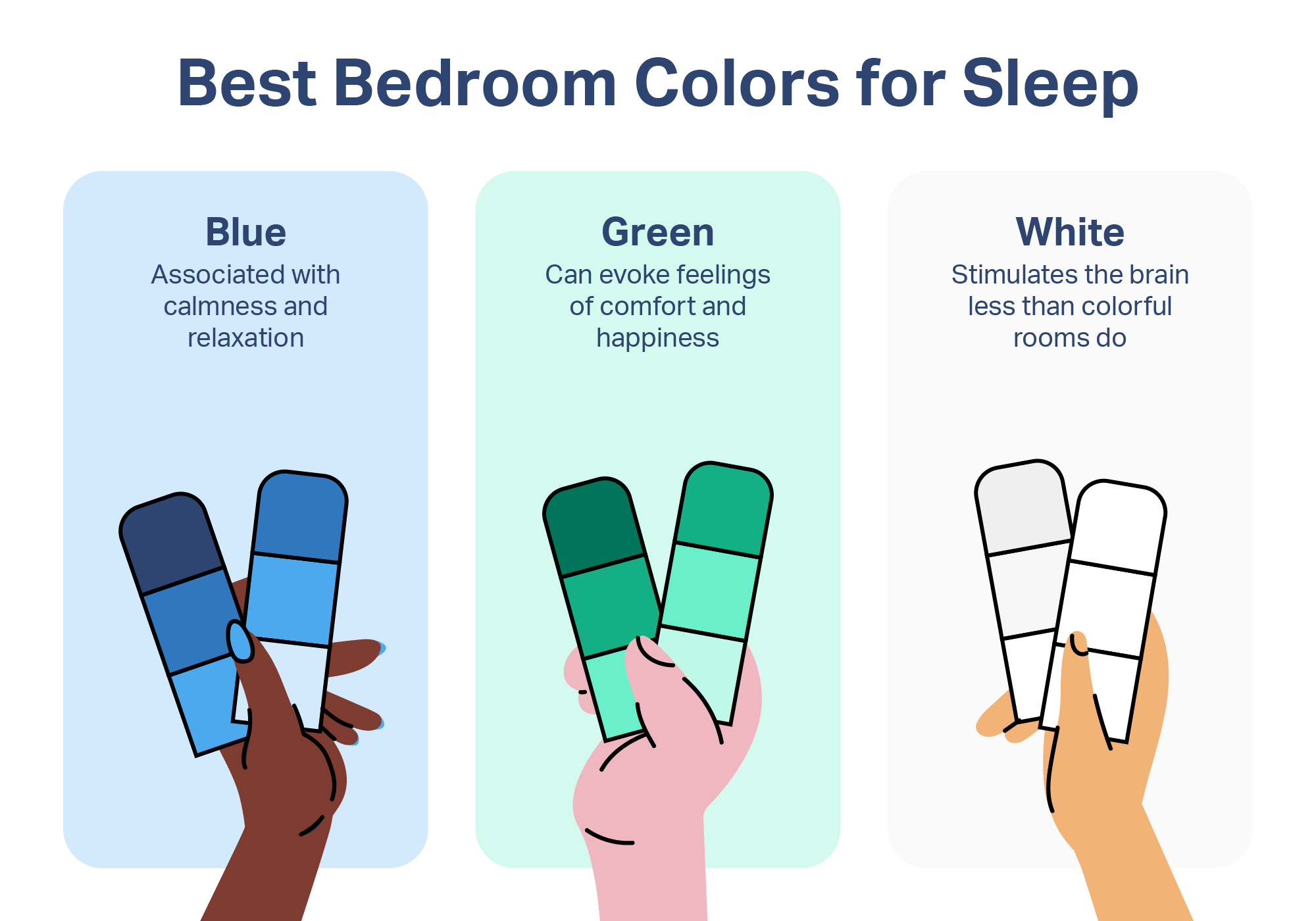
Blue
In general, people tend to associate blue with calmness and relaxation, making it one of the best colors to paint your bedroom. The visible light spectrum ranges from shorter to longer wavelength light. People tend to prefer cool-toned colors that have a short wavelength, such as blue, for interior spaces.
Blue may promote relaxation due to its association with the tranquility of a clear sky or a calm body of water. Studies of color and language have found that blue is strongly linked to words such as “relaxed,” “safe,” “satisfied,” and “secure.” Some research even suggests that the color blue can reduce heart rate and blood pressure .
While little research explores the direct connection between bedroom color and sleep, one survey found that people with blue bedrooms had the longest average sleep per night, compared to people with different colored bedrooms.
However, darker shades of blue can sometimes evoke negative feelings such as sadness, loneliness, and defeat. This shows how a color’s brightness or darkness can change a person’s emotional response to the color.
Green
Like blue, green may also be a good choice for a bedroom color. Green is considered a cool color due to its short wavelength. People report that green has a relaxing effect and evokes feelings of comfort, peace, spaciousness, hope, and happiness.
Green may promote relaxation due to its association with nature and plants. Common positive words that people associate with green include “outdoors,” “grateful,” and “merry.”
White
Technically, white is not a color, but is actually the combination of all colors across the full visible light spectrum. White may be a good choice for a bedroom due to its association with positive words such as “peace,” “secure,” “safe,” and “relaxed.”
White rooms may help with sleep because they stimulate the brain less than colorful rooms do . Some people report associating white with a lack of emotion and emptiness, which suggests that white rooms could potentially help people clear their minds before sleep.
Worst Colors For Sleep
The worst colors for sleep are likely those that are both stimulating and provoke negative emotions, since this may prevent relaxation. In general, people tend to find warm colors with long wavelengths, such as red and yellow, the most stimulating.
Red
Red may be the worst color to paint your bedroom. Red is a warm color and has the longest wavelength of any color on the visible light spectrum. People often associate red with fear, anger, and excitement as well as stressful words such as “panic,” “injury,” and “pain.” Furthermore, people find red rooms stimulating, and they perceive them to be smaller than rooms of the same size painted with cooler colors.
Research has found that viewing the color red may promote aggression and increase blood pressure and pulse rate. People’s emotional and physical responses to red may be due to the association of red with threats, alarms, and blood.
Orange and Yellow
Because other warm colors such as orange and yellow are also stimulating, they may not promote sleep as well as cooler colors such as blue or green.
Black
While darkness promotes sleep and regulates our sleep-wake cycle, black may not be the best color for a bedroom due to its negative emotional associations .
Black absorbs all wavelengths of visible light, and like white, is neither a cool nor a warm color. Black may be less stimulating and produce less active feelings in people than warmer or cooler colors do. However, people strongly relate the color black to negative emotions such as depression, sadness, anger, and fear. If you are still considering painting your bedroom black, keep in mind that you will be waking up to a black bedroom in the morning.
People may also want to avoid painting their bedroom other dark colors, such as brown. These are often associated with difficult emotions such as anxiety and sadness, which may not create a relaxing mood before bed.
The Importance of Brightness
While the color of a bedroom may impact a person’s sleep through their emotions, this may depend largely on the brightness of the color. Brighter colors may produce more positive emotions than darker colors .
For example, yellow is often considered a happier color than blue. However, when the brightness of these colors change, people perceive light blue as happier than dark yellow. Similarly, certain shades of dark green may provoke negative images of decay , whereas lighter shades of green remind people of the outdoors.
On the other hand, some research suggests that brighter colors can be more stimulating. Keep brightness in mind as you consider what colors are best for sleep, and choose the color and shade that make you feel the most relaxed.

Still have questions? Ask our community!
Join our Sleep Care Community — a trusted hub of sleep health professionals, product specialists, and people just like you. Whether you need expert sleep advice for your insomnia or you’re searching for the perfect mattress, we’ve got you covered. Get personalized guidance from the experts who know sleep best.
References
9 Sources
-
Jonauskaite, D., Abu-Akel, A., Dael, N., Oberfeld, D., Abdel-Khalek, A. M., Al-Rasheed, A. S., Antonietti, J. P., Bogushevskaya, V., Chamseddine, A., Chkonia, E., Corona, V., Fonseca-Pedrero, E., Griber, Y. A., Grimshaw, G., Hasan, A. A., Havelka, J., Hirnstein, M., Karlsson, B. S. A., Laurent, E., … Mohr, C. (2020). Universal patterns in color-emotion associations are further shaped by linguistic and geographic proximity. Psychological Science, 31(10), 1245–1260.
https://pubmed.ncbi.nlm.nih.gov/32900287/ -
Strauss, E. D., Schloss, K. B., & Palmer, S. E. (2013). Color preferences change after experience with liked/disliked colored objects. Psychonomic Bulletin & Review, 20(5), 935–943.
https://pubmed.ncbi.nlm.nih.gov/23616112/ -
Liu, W., Ji, J., Chen, H., & Ye, C. (2014). Optimal color design of psychological counseling room by design of experiments and response surface methodology. PloS one, 9(3), e90646.
https://pubmed.ncbi.nlm.nih.gov/24594683/ -
Damiano, C., Gayen, P., Rezanejad, M., Banerjee, A., Banik, G., Patnaik, P., Wagemans, J., & Walther, D. B. (2023). Anger is red, sadness is blue: Emotion depictions in abstract visual art by artists and non-artists. Journal of Vision, 23(4), 1.
https://pubmed.ncbi.nlm.nih.gov/37010831/ -
Sroykham, W., Wongsathikun, J., & Wongsawat, Y. (2014). The effects of perceiving color in living environment on QEEG, oxygen saturation, pulse rate, and emotion regulation in humans. Annual International Conference of the IEEE Engineering in Medicine and Biology Society, 6226–6229.
https://pubmed.ncbi.nlm.nih.gov/25571419/ -
Geng, L., Hong, X., & Zhou, Y. (2021). Exploring the implicit link between red and aggressiveness as well as blue and agreeableness. Frontiers in Psychology, 11, 570534.
https://pubmed.ncbi.nlm.nih.gov/33519586/ -
Sutton, T. M., & Altarriba, J. (2016). Color associations to emotion and emotion-laden words: A collection of norms for stimulus construction and selection. Behavior Research Methods, 48(2), 686–728.
https://pubmed.ncbi.nlm.nih.gov/25987304/ -
Wilms, L., & Oberfeld, D. (2018). Color and emotion: Effects of hue, saturation, and brightness. Psychological Research, 82(5), 896–914.
https://pubmed.ncbi.nlm.nih.gov/28612080/ -
Palmer, S. E., & Schloss, K. B. (2010). An ecological valence theory of human color preference. Proceedings of the National Academy of Sciences of the United States of America, 107(19), 8877–8882.
https://pubmed.ncbi.nlm.nih.gov/20421475/

